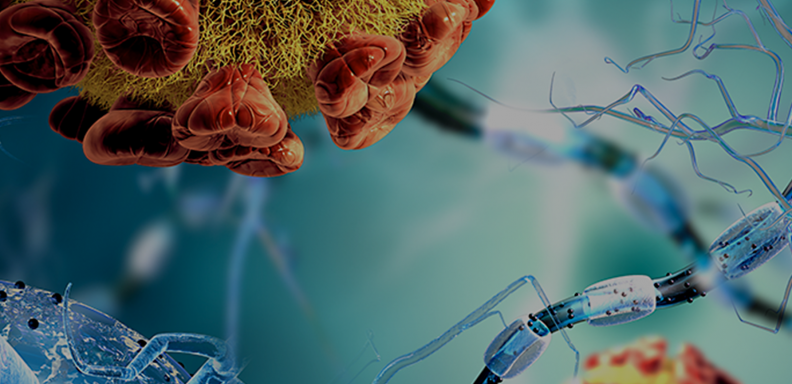Neuroblastoma is a common pediatric cancer that originates in developing nerve cells outside the brain. While increasingly intensive treatments have improved the survival of patients with high-risk neuroblastoma, currently more than 40% of patients do not survive.
New research from the University of Chicago shows the potential for a promising new approach to treating neuroblastoma by targeting RNA modifications associated with the disease. In a new study published in Cell Reports, scientists show that a drug molecule designed to inhibit proteins that add modifications to RNA transcripts reduced the growth of neuroblastoma cells. The treatment also suppressed the growth of neuroblastoma tumors in mouse models, suggesting that it could be an effective strategy for treatment.
“High risk neuroblastoma remains very difficult to cure with current approaches, and survivors are at high-risk for treatment-related toxicities, including severe chronic health conditions and second cancers,” said Susan Cohn, MD, Professor of Pediatrics, and senior author of the new study. “We are testing a completely different therapeutic strategy using drugs that change gene expression by inhibiting RNA modifying proteins. If future studies validate our findings, this strategy may transform our approach for treating neuroblastoma patients.”

Susan L. Cohn, MD
Professor of Pediatrics
Committee on Cancer Biology
Committee on Clinical Pharmacology and Pharmacogenomics
Advances in genetic sequencing, data analysis, and chemical biology have identified countless genetic links to cancer, yet DNA doesn’t tell the whole story. Sometimes, molecules are added to DNA bases and RNA transcripts, affecting the way genes are expressed or how they get translated into proteins. These modifications to DNA and RNA act as molecular switches, determining whether a gene is turned on or off, thus influencing cellular processes, tissue development, and disease progression.
Cohn and her team partnered with Chuan He, PhD, the John T. Wilson Distinguished Service Professor of Chemistry and Professor of Biochemistry and Molecular Biology at UChicago, to study these effects in neuroblastoma. He is a pioneer in the fields of RNA and DNA modification research, known as epitranscriptomics and epigenetics, respectively. His lab has uncovered new regulatory pathways through RNA methylation.
One of the most common messenger RNA modifications is N6-methyladenosine (m6A), which gets added to an RNA transcript by “writer” proteins, including a complex formed between methyltransferase-like 3 (METTL3) and methyltransferase-like 14 (METTL14). High levels of METTL3 and METTL14 are known to drive the growth of many adult cancers, so Cohn and He wanted to look at its effects in neuroblastoma.
The team, led by Monica M. Pomaville, MD, a former pediatric resident who trained with Cohn and He and is now a fellow at the Children’s Hospital of Philadelphia, showed that high levels of METTL3 expression in neuroblastoma tumors were associated with significantly lower survival rates in patients. This suggests that METTL3 may drive tumor growth.



